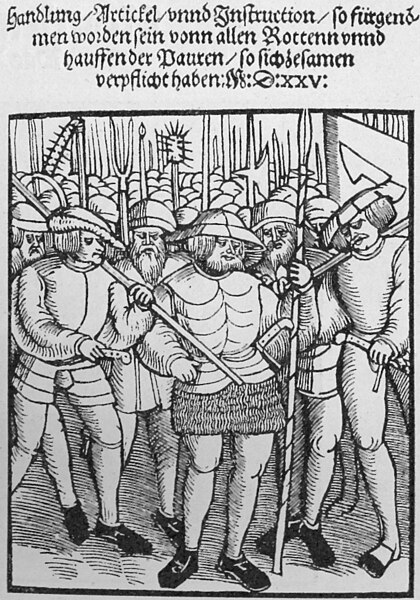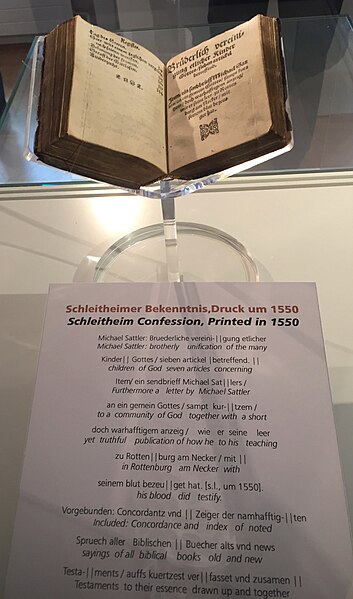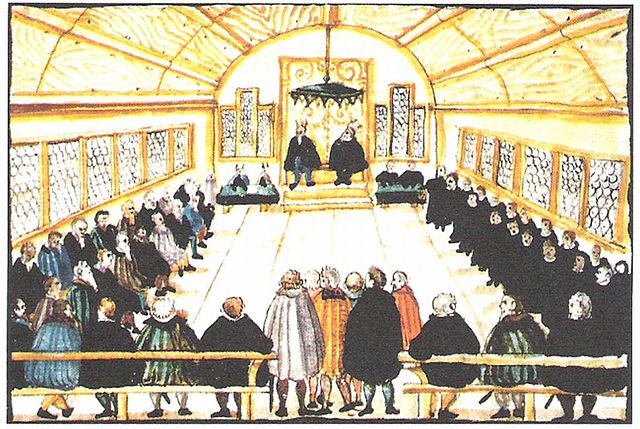A conventicle originally signified no more than an assembly and was frequently used by ancient writers for a church. At a semantic level conventicle is a Latinized synonym of the Greek word for church, and points to Jesus' promise in Matthew 18:20, "Where two or three are met together in my name."
A Covenanters' conventicle. The Covenanters' Preaching, painting by George Harvey
A Conventicle Preacher before the Justices, painting by Robert Inerarity Herdman
Imaginary depiction of a conventicle in progress, from H. E. Marshall's Scotland's Story (1906)
Plaque commémorative du premier synode du Désert, aux Montèzes
Anabaptism is a Christian movement which traces its origins to the Radical Reformation in the 16th century. Anabaptists believe that baptism is valid only when candidates freely confess their faith in Christ and request to be baptized. Commonly referred to as believer's baptism, it is opposed to baptism of infants, who are not able to make a conscious decision to be baptized.
Twelve Articles of the Peasants pamphlet of 1525
Schleitheim Confession printed in 1550, displayed in the Anabaptist Room of the Local History Museum in Schleitheim, Switzerland.
Dissatisfaction with the outcome of a disputation in 1525 prompted Swiss Brethren to part ways with Huldrych Zwingli.
Thomas Müntzer led the German peasants against the landowners








